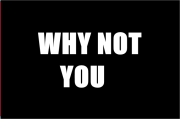You’ve got great ideas. You’ve got an audience. But, without the skills to effectively present yourself and your thoughts, you’ll spend the rest of your career on the sidelines. Leaders inspire action, but it takes more than just great content to gain a following. It’s time to learn how to deliver a powerful presentation, WOW a large group or simply make an impression during a one-on-one discussion.
Step 1: Preparation
Every great presenter has one thing in common – they give, they don’t take. In fact, the best way to give a truly memorable presentation is to turn the tables and shift the focus away from you and onto your audience. In this three-part series, we’ll cover the essential elements of a powerful presentation – prep work, delivery and takeaways. Anyone can be a great presenter. I promise. It just takes practice. Here are a few tips for getting started:
- See yourself as a present-er. I know it’s cheesy, but if you think of your presentation as a gift, then you’re much more likely to capture the attention of your audience.
- Step away from the computer. Never build your presentation with a PowerPoint template. Your presentation isn’t your PowerPoint deck. The presentation is you – your brain, your ideas, your perspective and your knowledge. Firm up your ideas before you put them into a template.
- Know your audience. Who are they and what information do they need? A presentation isn’t about holding people captive for an hour. It’s an opportunity to captivate, inspire, inform, transform or educate.
- Identify one big idea. What do you want your audience to take away? Focus on no more than two-to-three key points, but find a repeating theme (one big idea) that pulls it all together.
- Use stories to engage your audience. Look for opportunities to incorporate brief stories into your presentation. Don’t be afraid to make it personal – perhaps a story that influenced your viewpoint or position on the subject.
- Nail the opening. Audiences are easily distracted. You have to capture their attention quickly. Open with a surprising fact, a related story or a question. Engage them from the get go. Never open with an apology, excuse or long-winded review of your accomplishments.
- PowerPoint isn’t the problem – bullet points are. Most PowerPoint presentations could give themselves. They’re packed with too many words, far too many ideas and way too many instructions. If you use PowerPoint, think of the meaning of the slide – what idea are you trying to get across. Find an appropriate photo or graphic as the background and create one sentence that captures the essence of your message. Just one sentence per slide.
- As you prepare to give your presentation, ask yourself what you would say if technology failed and it was just you and the audience. Then, visualize each slide along with the key message you’re trying to convey. Practice. Practice. Practice.
- Know when to stop. Your audience has an attention span of about 18 minutes. If you have an hour to speak, be sure to create opportunities for audience participation, discussion or brainstorming. If you want your audience to retain the information you’ve presented, they have to participate.
- Prepare for objections or questions in advance. Determine whether you’re going to take questions during, between sections or after your presentation. Always repeat the question. Don’t be afraid to say, “I don’t know, but I’ll get back to you.”
Step 2: Delivery
There are three things that matter when you’re presenting. Here’s a hint…one of the three is not your PowerPoint deck. They include your non-verbal communication, your voice and your message. Your body language (non-verbal communication) and voice dramatically impact whether or not your audience believes what you have to say. Simply put, the way you deliver your message is what people use to judge your level of expertise, intelligence and trustworthiness. We’ve all watched presentations where we couldn’t get past the speaker’s irritating voice, her pacing or his lack of eye contact.
Let’s start with the most important of the three which is non-verbal communication. By this I mean your posture, your body language and your overall presence. Although difficult, the best way to stand in front of an audience is with your arms at your side. Clasping your hands together is a natural response to fear. In essence, you’re covering or protecting yourself. And, when you clasp your hands, you look nervous (which, of course, you are). When you look nervous, you appear less confident and that impacts your credibility. You can use your hands to make a point or to point at something, but when not in use, they should be at your side. Also, when you move, move with purpose. Don’t rock back and forth and don’t wander aimlessly. Walk over to one side of your audience, make eye contact with someone in the audience, make your point, pause, and then walk to another side of the room and do the same thing. Making eye contact with individuals in your audience creates intimacy. Finally, don’t talk AT your audience, talk to them. Think of your presentation as a conversation. How would you deliver this information to one person over a cup of coffee? A good presenter is able to close the gap between herself and her audience.
The second most important element in your presentation is your voice. By voice, I mean your cadence, how you punctuate your sentences and whether or not you pause. Have you ever listened to a presentation and the speaker’s voice never changed? It didn’t speed up or slow down. It didn’t rise or fall. It was flat, it was frenetic or it was extremely loud throughout the entire presentation. More than likely, you lost interest. Effective presenters raise their voices to accentuate a point. They lower their voices to almost a whisper to draw in their audience. Pausing is one of the most effective tools in the presenter’s arsenal. Every time you pause, you give the audience time to fully absorb what you’ve said. It is truly the only way that you can effectively get your message across. Oftentimes people give too much information. They give it too quickly. They don’t pause. And, then they wonder why no one was able to remember what they said. Pause often and pause after you’ve made an important point. Finally, use your voice to punctuate your sentences. Don’t be afraid to demonstrate a little emotion by raising your voice (or lowering your voice), using your arms or simply pausing to let the full impact of your message reach the audience.
Step 3: Takeaways
The third element in any presentation is “your story.” Your story is your message. Whether you’re giving a PowerPoint presentation or presenting without any props or aids at all, think of your message as a coherent story. Remember — you want the audience to keep their eyes on you (not on your slides or props). Because we read from left to right, stand to the left (audience’s left) of the screen. Your slides simply keep you on track. The shorter the better. Too much data and your audience will get overloaded and ultimately disconnect. Don’t anticipate your next slide. Look at the slide as though you’re seeing it for the first time along with the audience. Slides exist to queue you. They’re not the storyteller. You are. Use your voice to drive home your point.
Don’t read your slide verbatim. Reading puts people to sleep and completely kills all interest in your topic. It undermines your credibility and is the fastest way to drive people from the room.
If presenting a quote, look at the slide together and say something like….read the words of a great leader. If you’re presenting findings or statistics, don’t try to fit everything into one slide. Select one statistic per slide and be creative. For example, instead of showing bar chart of your intern conversion rates over the past five years, show one slide that says “Conversion rates up 75%.”
End with a quote, a story, a challenge or a call to action. If you want to keep people’s attention, make eye contact. If you want to make your story relevant, then use the word “you”. Incorporate statements such as “Have you ever” or “I believe you’ll find” or “What do you think about”. Your presentation isn’t all about you – it’s all about your audience.
Remember, if your body language or your voice gets in the way of your overall message, you’ll lose your audience. Delivery can make or break your presentation so spend as much time on your voice and your non-verbal communication as you do your slide deck.


